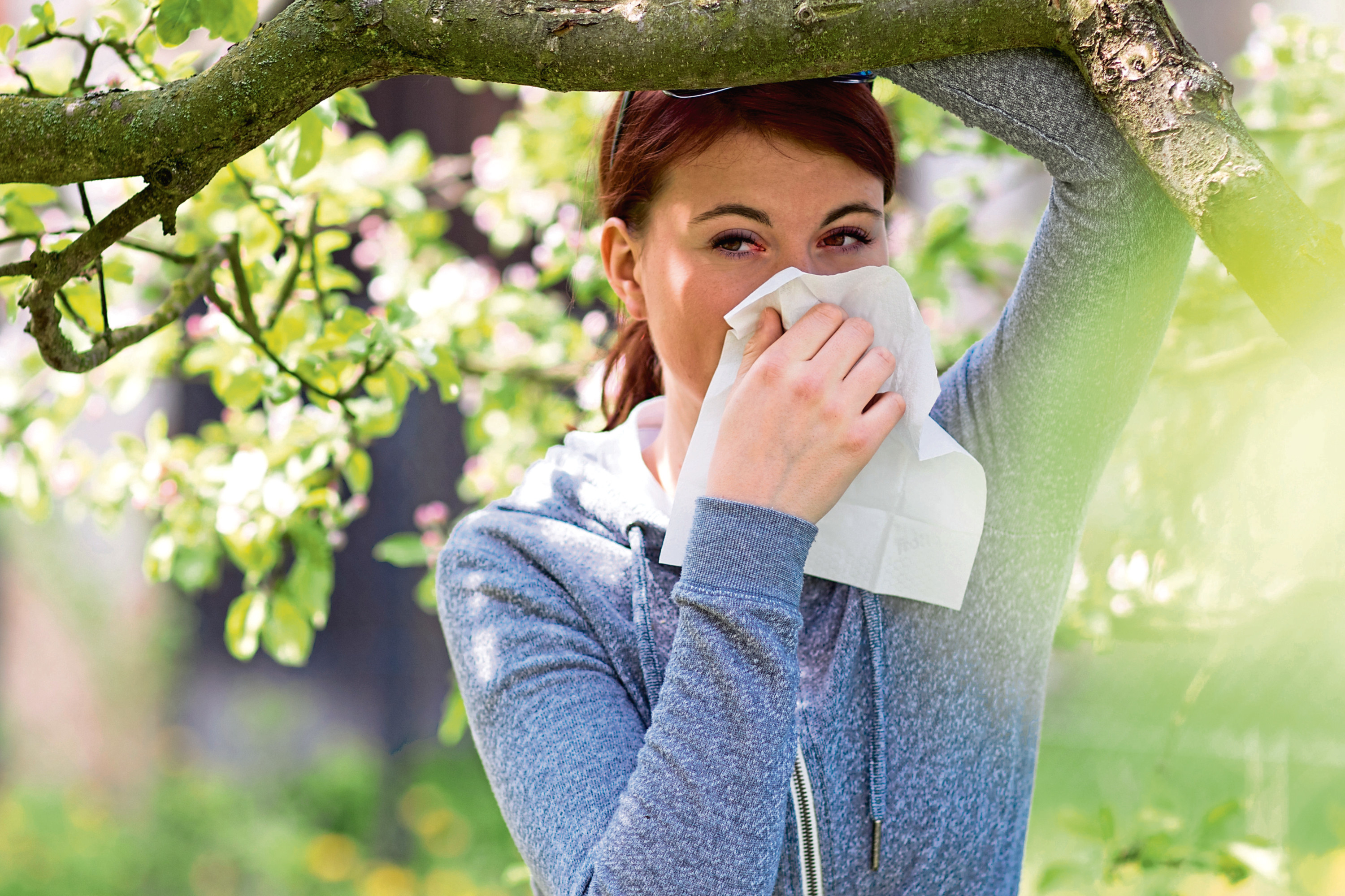
THE weather’s been pretty good of late.
Even here in Scotland there’s been a bright, glowing orb in the sky, spreading fear among the puzzled natives.
But the excuse to finally break out the cargo shorts and espadrilles means it’s also hay-fever season.
Also known as allergic rhinitis, this irritating condition is an allergic reaction to pollen that usually gets worse between late March and September, when it’s warm and humid.
It’s estimated that 40% of the population suffer from hay fever and, even with closed windows, pollen can find its way indoors and prevent people from going about their day-to-day life.
The most common symptoms are usually caused when our bodies, in contact with the outside, produce allergic antibodies to proteins in tree and grass pollen.
When pollen is inhaled the proteins cause the antibodies to burst and release histamine and it’s this defence system that triggers the sneezing, itching, sore eyes and runny nose that many of us experience in the warmer months.
In the longer-term, symptoms can cause airways to inflame and block, resulting in poor sleep, infections or sinusitis which can also lead to skin around the eyes becoming swollen.
The main triggers of hay fever are tree pollen, grass pollen, weed pollen and fungal spores, with grass pollen being the most common, affecting up to 90% of those who are unlucky enough to have hay fever.
Allergic rhinitis is usually treated with antihistamines, such as Cetirizine and Loratadine but here are some non-pharmaceutical remedies that could help you feel better.
“Vacuuming is one of the best things you can do to reduce pollen particles indoors,” says Sara Alsen, communications director of air purifier firm Blueair.
“Make sure your vacuum cleaner is fitted with a good filter that doesn’t re-release the pollen particles back into the air.”
She recommends buying one that uses a bag, as they’re the best at trapping dust and adds: “Look for one with a high-efficiency particulate air (HEPA) filter to remove at least 99.97% of ultra-small particles that can cause health problems.”
Just like dust, pollen can land on surfaces and floors and remain there, unseen to the naked eye.
“Instead of cleaning with a feather duster, make sure you clean all surfaces with a damp cloth or microfibre mop which can remove smaller particles better, and ensure that you’re not just spreading them around your home,” says Sara.
To make sure you don’t end the day with an unwelcome dose of pollen, take off your coat, shoes and clothing as you enter your home.
“Pollen clings to your clothing, as well as shoes and hair,” says Sara, “so use a mat to wipe off your shoes or, even better, leave them by the door.”
A cold shower could be just what you need to calm your symptoms, as water blasts pollen from the body before it can irritate your nose and eyes.
“During the summer months, we carry a lot of pollen into the home with us so it’s a good idea to shower and wash your hair when you’ve been outside,” says Sara, “as the particles can easily be brought indoors.”
The polluted air from outside can add to indoor pollutants that irritate our sinuses, including cigarette smoke, scented candles and stain removers.
“Air purifiers remain the most efficient way to remove these airborne pollutants, helping individuals breathe healthier and relieve many allergy symptoms,” suggests Sara, who recommends investing in one that uses HEPA silent technology.
While pollen tends to spend most of its time outside, it can be hard to keep it out of your car, too.
“The air inside the car can be up to 15 times more polluted than on the road outside,” says Sara.
“A good air purifier can remove the pollen inside your car in four to six minutes.”
Check the pollen count and adapt your daily route accordingly. Most cities in the UK provide pollen maps, such as the Pollen Forecast published by the Met Office (metoffice.gov.uk).
“Mornings and breezy days are usually the worst,” says Sara, “but this can vary from one region to another.
“Pollution can worsen the effects, too, so if you live in a big city it may be a good idea to avoid being outside during rush hour.”
Anything you can do to stop pollen getting into your nose will help stop symptoms.
“Face masks are rare in the UK but they can be an effective way of filtering out pollen from the air you breathe,” explains Sara.“A good face mask can make outdoor life bearable when pollen counts are high.”
Got a spare pot of Vaseline at home? Get smearing as some people find that putting a dab inside each nostril can ease soreness and stop pollen in its tracks.

Enjoy the convenience of having The Sunday Post delivered as a digital ePaper straight to your smartphone, tablet or computer.
Subscribe for only £5.49 a month and enjoy all the benefits of the printed paper as a digital replica.
Subscribe